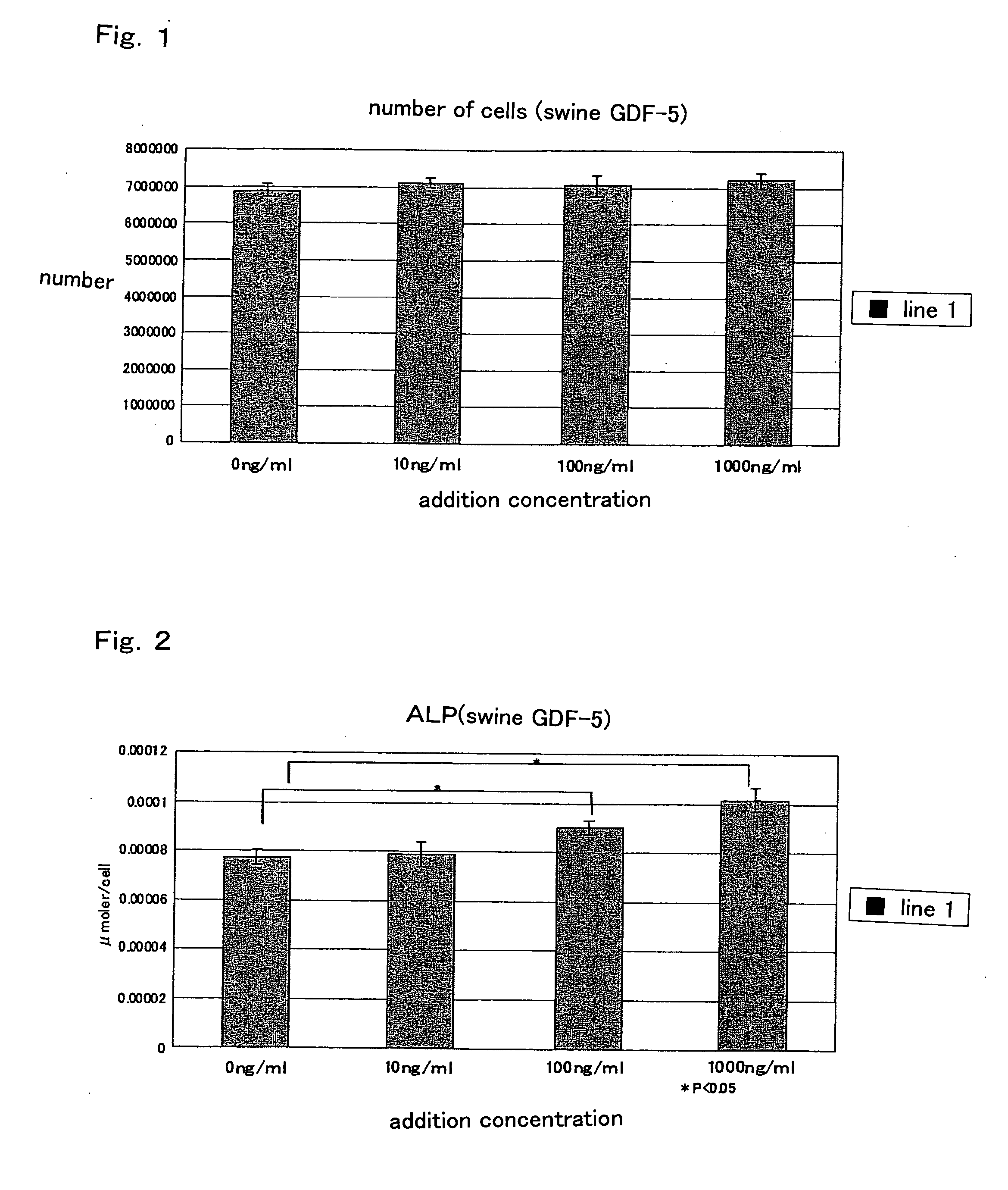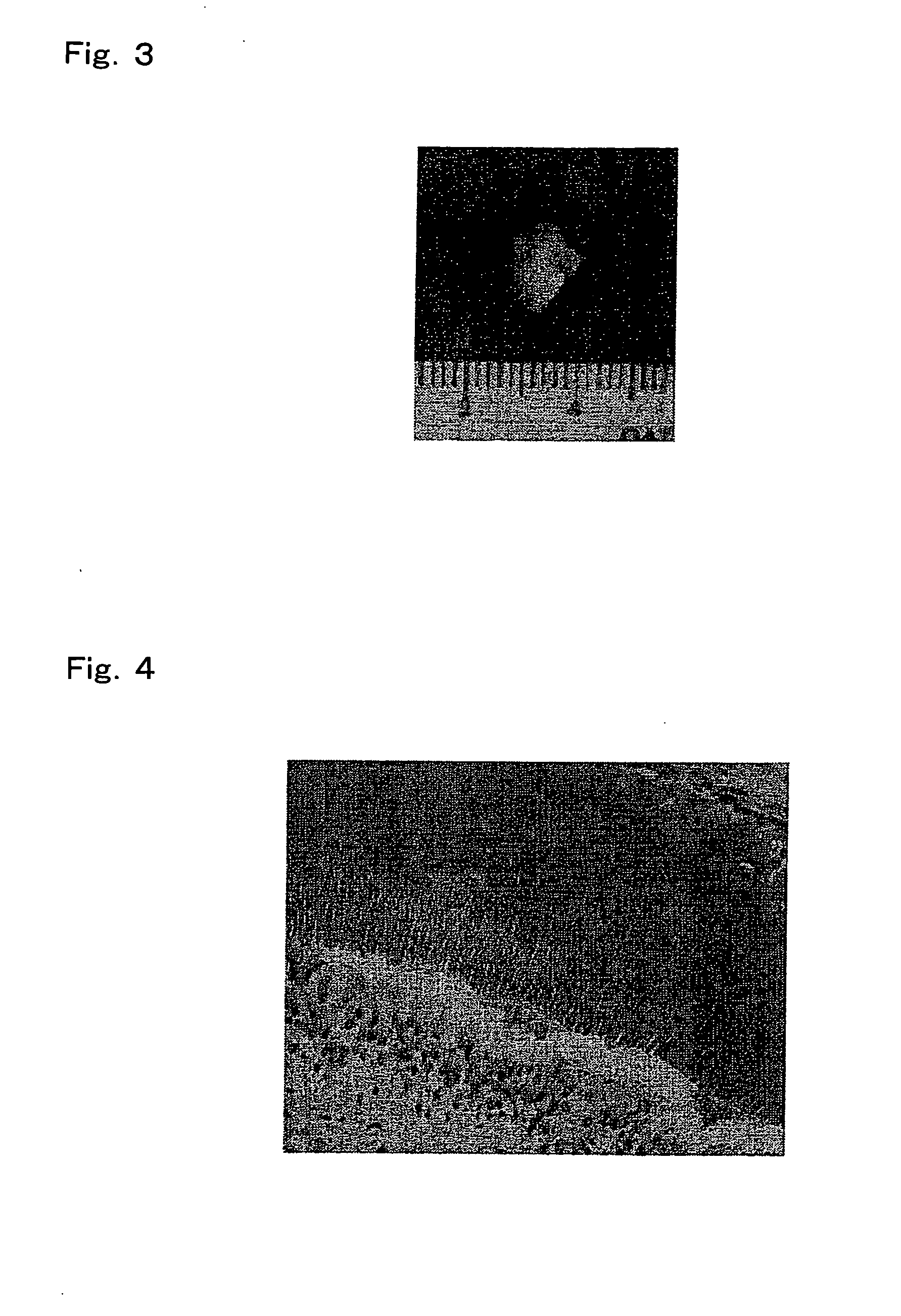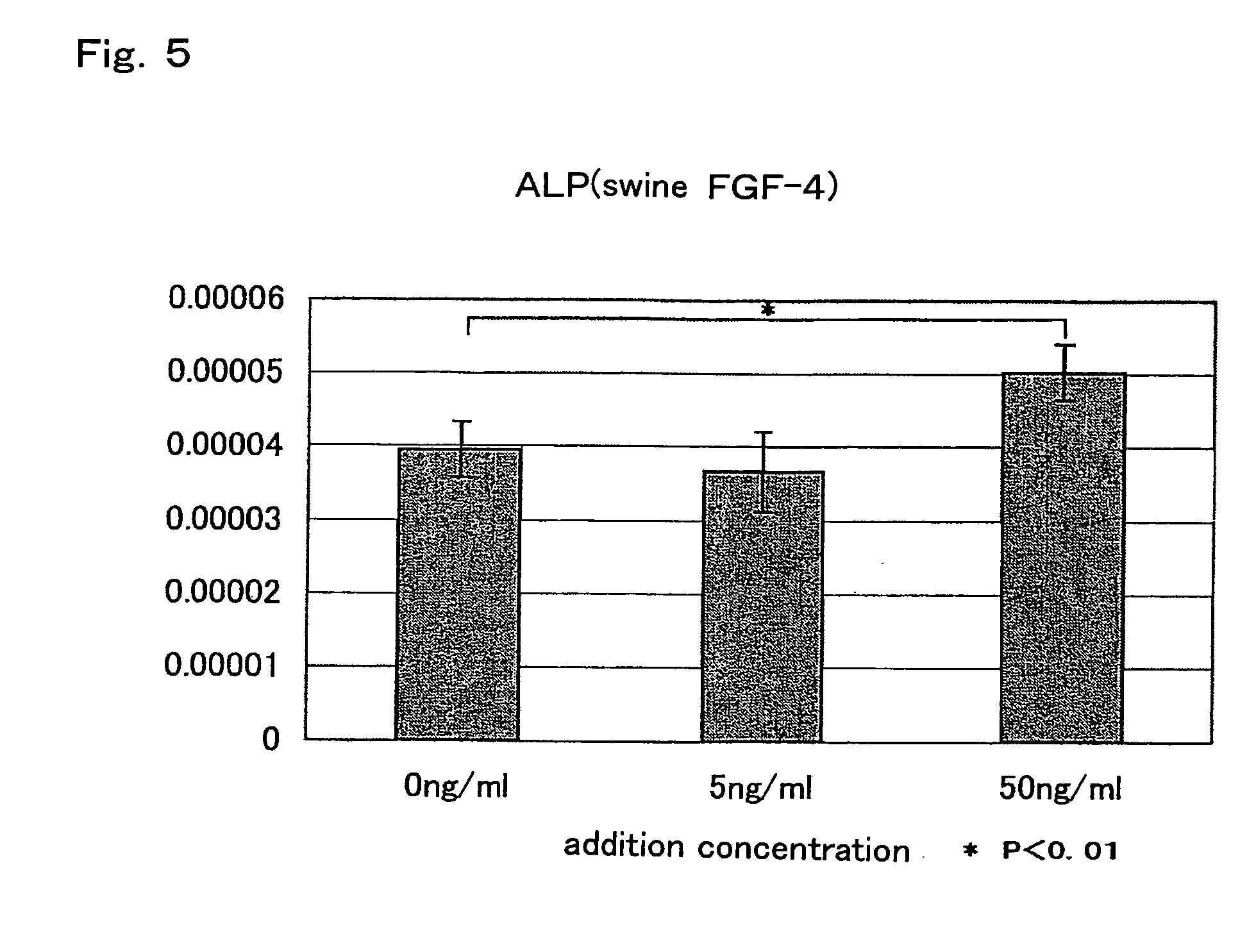Method for regenerating tooth germ
a technology of tooth germ and regenerative method, which is applied in the field of regenerating tooth germ, can solve the problems of uncomfortable feeling, imposing psychological pressure on patients, and problematic conventional artificial teeth, and achieve the effects of promoting differentiation and the growth of tooth germ cells, and improving the survival rate of tooth germ cells
- Summary
- Abstract
- Description
- Claims
- Application Information
AI Technical Summary
Benefits of technology
Problems solved by technology
Method used
Image
Examples
reference example 1
Isolation of Tooth Germ and Tooth Germ Cells
[0049] Using a bone chisel, the tooth germ of the third molar tooth was aseptically extirpated from the lower jawbone of a fresh swine with an age of 6 months old. From this tooth germ, calcified tissues were eliminated in 30 ml of PBS(−) (phosphate buffered saline) solution containing 2 ml of penicillin / streptomycin, and the remaining portion was then transferred into DMEM medium (produced by adding 10% fetal bovine serum, 2% penicillin / streptomycin, and 2% glutamax to Dulbecco's Modified Eagle medium). Subsequently, the resultant was subjected to an enzyme treatment with 2 mg / ml collagenase at 37° C. for 50 minutes. Thereafter, the resultant was centrifuged (1,500 rpm, 8 minutes) and then subjected to a filtration treatment with a 70-μm cell strainer, so as to obtain cells. The obtained cells were cultured in DMEM medium (produced by adding 10% fetal bovine serum and 2% penicillin / streptomycin (100 units / 100 μg / ml) to DMEM medium) for 3...
example 1
Comparison of Difference in Cell Growth Ability and in Differentiation Induction Ability Between Addition and Not-Addition of Physiologically Active Substance
[0050] The cells obtained in Reference example 1 were inoculated into a 6-well plate. When the cells became 70% confluent, the serum was eliminated. Thereafter, the cells were washed with PBS(−), and they were then cultured in a serum free medium, to which GDF-5 had been added. The concentration of the added substance was set at 0 ng / ml, 10 ng / ml, 100 ng / ml, and 1,000 ng / ml. Five days after the addition, the number of cells was counted by WST-8Kit, and alkaline phosphatase activity was then measured (by the method of Lowry). The results are shown in FIGS. 1 and 2.
[0051] From the results shown in FIG. 1, it is found that the number of cells, to which GDF-5 had been added, was greater than the number of cells, to which GDF-5 had not been added. In addition, alkaline phosphatase activity acting as an indicator of cells that form...
example 2
Regeneration of Tooth Germ Using Addition of Physiologically Active Substance (In Vivo Evaluation)
[0052] Using a bone chisel, the tooth germ of the third molar tooth was aseptically extirpated from the lower jawbone of a fresh swine with an age of 6 months old. From this tooth germ, calcified tissues were eliminated in 30 ml of PBS(−) (phosphate buffered saline) solution containing 2 ml of penicillin / streptomycin, and the remaining portion was then transferred into DMEM medium (produced by adding 10% fetal bovine serum, 2% penicillin / streptomycin, and 2% glutamax to a DMEM medium). Subsequently, the resultant was subjected to an enzyme treatment with 2 mg / ml collagenase at 37° C. for 50 minutes. Thereafter, the resultant was centrifuged (1,500 rpm, 8 minutes) and then subjected to a filtration treatment with a 70-μm cell strainer, so as to obtain cells.
[0053] The number of the cells obtained by the aforementioned procedures was counted under a polarization microscope using a hemac...
PUM
| Property | Measurement | Unit |
|---|---|---|
| Size | aaaaa | aaaaa |
Abstract
Description
Claims
Application Information
 Login to View More
Login to View More - R&D
- Intellectual Property
- Life Sciences
- Materials
- Tech Scout
- Unparalleled Data Quality
- Higher Quality Content
- 60% Fewer Hallucinations
Browse by: Latest US Patents, China's latest patents, Technical Efficacy Thesaurus, Application Domain, Technology Topic, Popular Technical Reports.
© 2025 PatSnap. All rights reserved.Legal|Privacy policy|Modern Slavery Act Transparency Statement|Sitemap|About US| Contact US: help@patsnap.com



